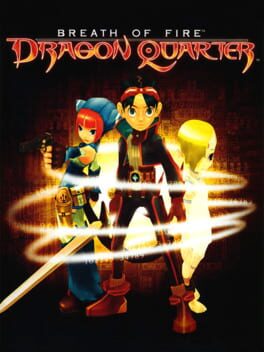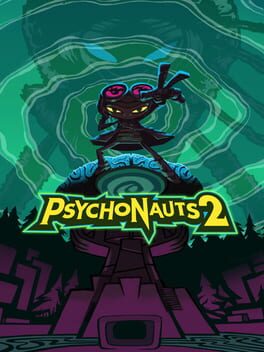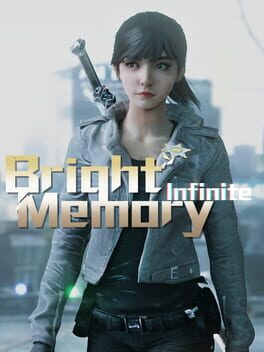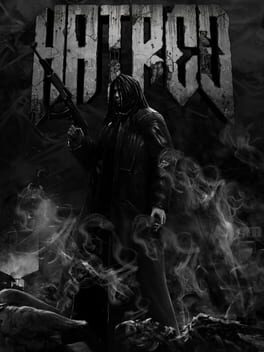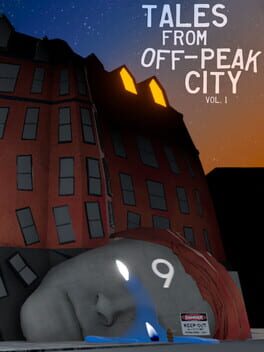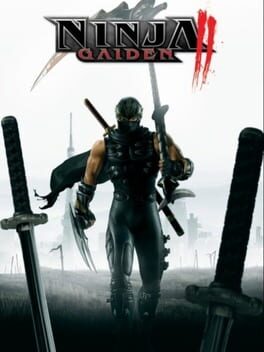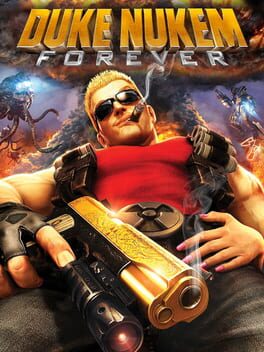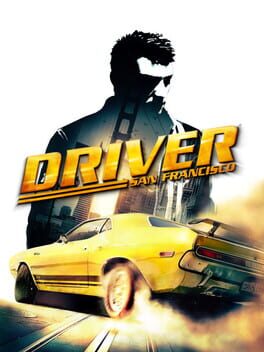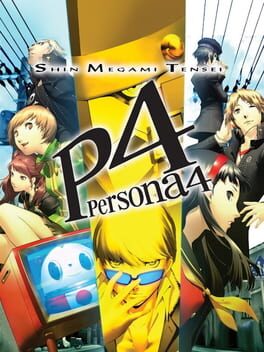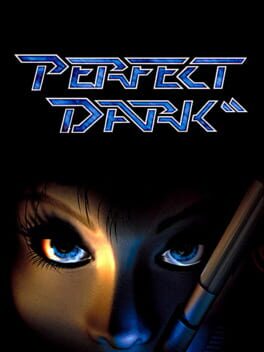Half of the review is obvious thoughts on the genre of the jrpgs to give some context
"This is a tiny tale of time"
A colorful punk brushstroke in the genre "JRPG". DRAGON QUARTER (DQ) was born as a response to its own saga and its own anthology, sticking to its more classic elements but readjusting the more established elements that seem to be stylistic features of a genre. that, at the end of the day, they are just comforts;
World.
Time.
Combat.
Movement.
economy.
Drama.
Difficulty.
Trips.
Although I have always had a lot of affection for the cities of Japanese RPGs, the worlds they build seem to me like a lie, not diegetically, but as a sensation entirely. Normally these "worlds" due to their abstract nature born from 2D pixels are flat fields painted with deserts, plains, gorges, whatever you want, but their scale and ability to navigate never changes or affects, perhaps by convention, perhaps because RPGs are already too numerical and schematized to add more nuances to a navigation that, although it has aesthetic detail, is a process between combats and drama, which are also insufficient to transmit something cohesive, since the combats are usually linked to the context of the drama. In JRPGS, the characters are usually forced to travel the world as they become a kind of misunderstood fugitives for whatever reasons, they are in constant tension, sometimes pursued or in a race against time and they are supposed to be travelers, with resources and cargo. limited. curiously, the player can take all the time in the world, can go wherever he wants (with relative freedom), the combat is relaxed with enough resources and time does not advance, there is also nothing that translates or symbolizes some kind of mental or spiritual fatigue, if there are mana tonics and potions and such but that shouldn't cure stress or fear. And one thing, the protagonists, usually kids with great hearts, eager or not for adventure and wanting to discover the world, ambitious but without a clear vision of how the world works and how they want to be part of it ... Or depressed boys because Their giant and extremely cool sword weighs too much or the spikes of their hairstyles are not very perfect, whatever.
All of this will sound like obvious points, but exemplifications of some problems that lead to dissonant experiences for me, which should be an exciting and emotional adventure through a magitechnological world in which danger and joy come together and innocence gives way to Maturity ends up being a smooth and comfortable walk through a flat field where everything is static and the drama tries to deceive me, and all because JRPGs are supposed to be like that, that's the way the genre is.
Dragon Quarter (DQ) seems to be aware of this dissonant base and chooses to eliminate the "JRPG world" and its approach as it is popularly known, but sticking to some of the rules of the game.
it begins by eliminating the world, it does not exist. There are no green meadows or blue skies as far as the eye can see with a city looming around the corner, because there is not even a sky in the world that DQuarter takes place. people are forced to live in an underground world as deep as it is depressing, there are hardly any resources or space, the air is almost a precious commodity and only a dictated community order is what seems to work. It is not a world, but a succession of interconected corridors neither freedom nor space, there are no real cities or safe havens at all. In the middle of this dystopia is the protagonist, a young cop named Ryu (like all the protagonists of the BoF saga https://bof.fandom.com/wiki/Ryu) disappointed with life and living in the shadow of his friend ( cliche). During a mission he discovers that the government is experimenting with a girl (https://bof.fandom.com/wiki/Nina), he decides to rescue her and flee with her, acquiring the power to transform into a human-dragon hybrid that it becomes almost invincible, but with a high price to pay for abusing it.
With this starting point DQuarter establishes a drama accompanied by its mechanics and its formalities.
We are fleeing from a government and its army with powerful generals (bosses) crossing a world full of monsters, so taking distance between the pursuers and the obstacles seems to be the most sensible thing, the director Makoto Ikehara and his team opts to raise the difficulty and design a combat around space and the management of movement and resources, but without a board or squares, all on a proportional scale and moving away from pseudonaturalist spaces where to position correctly and wisely use the skills to efficiently attack groups of enemies and exploit improvised strategies to generate distance with us and between them is the key to survival, (combat has more complexities, but it is worth discovering them for yourself). But the most important element and that symbolizes both the urgency of time, and the deterioration of the group (those things that JRPGs tend to ignore) It's the D-Counter mechanic, which regulates the player's usage of the dragon transformation ability, penalizing and eventually punishing overuse of dragon related abilities. If the D-Counter reaches 100% before a certain event in the game, the player will receive a game over, so they can go back to the last save point or start the game again keeping all the equipment and experience, however When starting the trip again, new scenes and dialogues will appear revealing little by little, and with each defeat the truth about everything that is happening and suggesting more consistently the value of accepting defeat as opposed to those JRPGs with blue skies that seem to want to avoid let the player experience it.
DQuarter replaces joy and color for oppression and lack of natural sunlight, it is a game that replaces the simplicity of the classic turn-based combat system with a complex balance of movement, combo strings of attacks with various properties and is not afraid of being difficult or brutal, or remind you that death constantly stalks you through a HUD number. is not afraid to deliver a Cheat Code in the form of mechanics or risky narrative approaches.
It's a gutsy game in a very stagnant genre and an imperfect (lol) masterpiece, and its end, could not be anything other than a sight of a blue sky.
"This is a tiny tale of time"
A colorful punk brushstroke in the genre "JRPG". DRAGON QUARTER (DQ) was born as a response to its own saga and its own anthology, sticking to its more classic elements but readjusting the more established elements that seem to be stylistic features of a genre. that, at the end of the day, they are just comforts;
World.
Time.
Combat.
Movement.
economy.
Drama.
Difficulty.
Trips.
Although I have always had a lot of affection for the cities of Japanese RPGs, the worlds they build seem to me like a lie, not diegetically, but as a sensation entirely. Normally these "worlds" due to their abstract nature born from 2D pixels are flat fields painted with deserts, plains, gorges, whatever you want, but their scale and ability to navigate never changes or affects, perhaps by convention, perhaps because RPGs are already too numerical and schematized to add more nuances to a navigation that, although it has aesthetic detail, is a process between combats and drama, which are also insufficient to transmit something cohesive, since the combats are usually linked to the context of the drama. In JRPGS, the characters are usually forced to travel the world as they become a kind of misunderstood fugitives for whatever reasons, they are in constant tension, sometimes pursued or in a race against time and they are supposed to be travelers, with resources and cargo. limited. curiously, the player can take all the time in the world, can go wherever he wants (with relative freedom), the combat is relaxed with enough resources and time does not advance, there is also nothing that translates or symbolizes some kind of mental or spiritual fatigue, if there are mana tonics and potions and such but that shouldn't cure stress or fear. And one thing, the protagonists, usually kids with great hearts, eager or not for adventure and wanting to discover the world, ambitious but without a clear vision of how the world works and how they want to be part of it ... Or depressed boys because Their giant and extremely cool sword weighs too much or the spikes of their hairstyles are not very perfect, whatever.
All of this will sound like obvious points, but exemplifications of some problems that lead to dissonant experiences for me, which should be an exciting and emotional adventure through a magitechnological world in which danger and joy come together and innocence gives way to Maturity ends up being a smooth and comfortable walk through a flat field where everything is static and the drama tries to deceive me, and all because JRPGs are supposed to be like that, that's the way the genre is.
Dragon Quarter (DQ) seems to be aware of this dissonant base and chooses to eliminate the "JRPG world" and its approach as it is popularly known, but sticking to some of the rules of the game.
it begins by eliminating the world, it does not exist. There are no green meadows or blue skies as far as the eye can see with a city looming around the corner, because there is not even a sky in the world that DQuarter takes place. people are forced to live in an underground world as deep as it is depressing, there are hardly any resources or space, the air is almost a precious commodity and only a dictated community order is what seems to work. It is not a world, but a succession of interconected corridors neither freedom nor space, there are no real cities or safe havens at all. In the middle of this dystopia is the protagonist, a young cop named Ryu (like all the protagonists of the BoF saga https://bof.fandom.com/wiki/Ryu) disappointed with life and living in the shadow of his friend ( cliche). During a mission he discovers that the government is experimenting with a girl (https://bof.fandom.com/wiki/Nina), he decides to rescue her and flee with her, acquiring the power to transform into a human-dragon hybrid that it becomes almost invincible, but with a high price to pay for abusing it.
With this starting point DQuarter establishes a drama accompanied by its mechanics and its formalities.
We are fleeing from a government and its army with powerful generals (bosses) crossing a world full of monsters, so taking distance between the pursuers and the obstacles seems to be the most sensible thing, the director Makoto Ikehara and his team opts to raise the difficulty and design a combat around space and the management of movement and resources, but without a board or squares, all on a proportional scale and moving away from pseudonaturalist spaces where to position correctly and wisely use the skills to efficiently attack groups of enemies and exploit improvised strategies to generate distance with us and between them is the key to survival, (combat has more complexities, but it is worth discovering them for yourself). But the most important element and that symbolizes both the urgency of time, and the deterioration of the group (those things that JRPGs tend to ignore) It's the D-Counter mechanic, which regulates the player's usage of the dragon transformation ability, penalizing and eventually punishing overuse of dragon related abilities. If the D-Counter reaches 100% before a certain event in the game, the player will receive a game over, so they can go back to the last save point or start the game again keeping all the equipment and experience, however When starting the trip again, new scenes and dialogues will appear revealing little by little, and with each defeat the truth about everything that is happening and suggesting more consistently the value of accepting defeat as opposed to those JRPGs with blue skies that seem to want to avoid let the player experience it.
DQuarter replaces joy and color for oppression and lack of natural sunlight, it is a game that replaces the simplicity of the classic turn-based combat system with a complex balance of movement, combo strings of attacks with various properties and is not afraid of being difficult or brutal, or remind you that death constantly stalks you through a HUD number. is not afraid to deliver a Cheat Code in the form of mechanics or risky narrative approaches.
It's a gutsy game in a very stagnant genre and an imperfect (lol) masterpiece, and its end, could not be anything other than a sight of a blue sky.
2022
Notes on Stray forcefully anti-intellectuals because it is necessary to think about video games outside the logic of video games or something like that
-I talk too much about spaces, their construction and exploration and I barely realize how important the height and size we use to move through it is, but I have always felt that small avatars are a little more interesting. Maybe because I'm 1.85, I have no idea.
-When Stray was released I saw a tweet that said something like "it's a game about being a cat but in BoTW you move more like a cat" or something like that. I found it a bit ridiculous because it seemed to disdain Stray's navigation based on pseudo-realistic logic, but in BoTW almost any surface is "sticky" and you can scale it like a lizard. That's not very catty bro
-The environments are excellent on their own, but they also seem to me to be an excellent architecture that reflects the dilemma of the automata.
There is a lot of beauty in walking around the district and just sitting next to any inhabitant, a robot, an npc, a mannequin. an inhabitant.
Why fool ourselves, if the game had been a cat Playground most of GamersTm would have been annoyed for not having objectives, "nothing to do".
goodoo.
-The complaint of many is that the game should have been a playground instead of a directed adventure with some freeform moments. I think so too, but against everything I believed, I ended up liking the direction, despite being quite conventional.
-Creating a fictional world through the aesthetic and cultural appropriation of countries with problematic political pasts (is there a country that does not have it?) can be problematic, but it is true that many countries have done it to a greater or lesser extent. It doesn't matter how; Turbo-capitalist revisions of Marie Antoinette of Austria, JRPGs with bucolic aesthetics or those martial arts movies where completely anachronistic techniques and movements are shown. Perhaps it would matter more WHO takes that culture to use it as background and decoration
-Alexis Ong's text isn't bad to be honest
-Sisi Jiang's text wouldn't be bad either. But back to the same.
It's not that I want to play the parry that we should be permissive with the romanticization (and appropriation) of a problematic aesthetic and culture for the sake of a freer and more experimental fiction... But if I'm doing it a little?? maybe?
Why complaining about the appropriation of pizza or the word (k)Otaku would be silly but doing it about Hong Kong architecture is smart?
-In the past, some Asian countries, by necessity or imposition, have also absorbed too much Western culture, now they appropriate it and, by necessity or because of the turbo-capitalism in which we live, they market their own culture.
I apologize if this may offend anyone but it is something that I see very real.
-I talk too much about spaces, their construction and exploration and I barely realize how important the height and size we use to move through it is, but I have always felt that small avatars are a little more interesting. Maybe because I'm 1.85, I have no idea.
-When Stray was released I saw a tweet that said something like "it's a game about being a cat but in BoTW you move more like a cat" or something like that. I found it a bit ridiculous because it seemed to disdain Stray's navigation based on pseudo-realistic logic, but in BoTW almost any surface is "sticky" and you can scale it like a lizard. That's not very catty bro
-The environments are excellent on their own, but they also seem to me to be an excellent architecture that reflects the dilemma of the automata.
There is a lot of beauty in walking around the district and just sitting next to any inhabitant, a robot, an npc, a mannequin. an inhabitant.
Why fool ourselves, if the game had been a cat Playground most of GamersTm would have been annoyed for not having objectives, "nothing to do".
goodoo.
-The complaint of many is that the game should have been a playground instead of a directed adventure with some freeform moments. I think so too, but against everything I believed, I ended up liking the direction, despite being quite conventional.
-Creating a fictional world through the aesthetic and cultural appropriation of countries with problematic political pasts (is there a country that does not have it?) can be problematic, but it is true that many countries have done it to a greater or lesser extent. It doesn't matter how; Turbo-capitalist revisions of Marie Antoinette of Austria, JRPGs with bucolic aesthetics or those martial arts movies where completely anachronistic techniques and movements are shown. Perhaps it would matter more WHO takes that culture to use it as background and decoration
-Alexis Ong's text isn't bad to be honest
-Sisi Jiang's text wouldn't be bad either. But back to the same.
It's not that I want to play the parry that we should be permissive with the romanticization (and appropriation) of a problematic aesthetic and culture for the sake of a freer and more experimental fiction... But if I'm doing it a little?? maybe?
Why complaining about the appropriation of pizza or the word (k)Otaku would be silly but doing it about Hong Kong architecture is smart?
-In the past, some Asian countries, by necessity or imposition, have also absorbed too much Western culture, now they appropriate it and, by necessity or because of the turbo-capitalism in which we live, they market their own culture.
I apologize if this may offend anyone but it is something that I see very real.
2021
Pyschonauts was a very charitable and warm game in his treatment of mental health. Far from drawing a world divided into healthy and sick, sane and crazy, his characters were built around psychiatric diagnoses, but they were presented as people with problems and fears who needed help to overcome them; suicidal tendencies, lewd behavior, amnesia, verbal incontinence ... or even aquaphobia, which is also presented as an excuse for the inability to swim in-game. an extensive field of traits and behaviors that were treated with humor, but at the same time with more respect than what real psychiatry would treat these symptoms, since it depends on the situation, they would be classified as "pathological", but mental illness is constructed for reasons beyond us, and can be deconstructed.
Psychonauts 2 takes the ending of the first game after Raz himself resolved his own traumas and learning to offer real help to people. It is sad to see that this sequel is a step back in the interactive, because navigating minds is an even more automated process and it formally feels conservative. the peculiarities outside the playable nucleus that appeared in the first psychonauts such as the strategy game against "napoleon", or the adventure game to solve the mystery of the milkman gave each mind a playable and thematic personality (level), and here they are barely present since most worlds are resolved through a mental power as a key to advance, a step back if you ask me.
However, the environmental narrative endows the minds-worlds that we visit with epic and intimacy in equal measure; an architecturally giant and twisted post office, the misivas are actually love letters and newspaper clippings recounting the fall of a country is the scene that personifies the loss of the war, and at the center of it all, a brain with a splinter stuck in, a piece of mirror in which Ford Cruller can no longer be seen
_____________________________________________________
Level design as a representation of the mind, architecture as a personification of desires, traumas and regrets
For me, the most special thing about Psychonauts was its excellence in using social conventions and applying them to its mechanics to form platformer game design elements, conventional, formally contemporary (classic these days), safe, but unexpectedly readable and expressive outside of how video games often use these social conventions.
In gaming, Mario, a short plumber who skilfully performs stunts on abstract architectures, or Sly Cooper, an anthropomorphic thief raccoon who can't swim (what the fridge !?) are perfectly valid narrative constructs, but outside the validation of his own environment and the bizarre internal logic of their platform worlds, neither makes much sense While most platformers from the early 2000s fought in this wave called "mascot platformers" re-adapting collect-a-thon structures, psychonauts chose to build a more cohesive diegesis, with more human and narrative-driven concerns.
The only thing that prevents me from recognizing Psychonauts 2 as a masterpiece, is its playable conservatism, justified, yes, but excessive
Psychonauts 2 takes the ending of the first game after Raz himself resolved his own traumas and learning to offer real help to people. It is sad to see that this sequel is a step back in the interactive, because navigating minds is an even more automated process and it formally feels conservative. the peculiarities outside the playable nucleus that appeared in the first psychonauts such as the strategy game against "napoleon", or the adventure game to solve the mystery of the milkman gave each mind a playable and thematic personality (level), and here they are barely present since most worlds are resolved through a mental power as a key to advance, a step back if you ask me.
However, the environmental narrative endows the minds-worlds that we visit with epic and intimacy in equal measure; an architecturally giant and twisted post office, the misivas are actually love letters and newspaper clippings recounting the fall of a country is the scene that personifies the loss of the war, and at the center of it all, a brain with a splinter stuck in, a piece of mirror in which Ford Cruller can no longer be seen
_____________________________________________________
Level design as a representation of the mind, architecture as a personification of desires, traumas and regrets
For me, the most special thing about Psychonauts was its excellence in using social conventions and applying them to its mechanics to form platformer game design elements, conventional, formally contemporary (classic these days), safe, but unexpectedly readable and expressive outside of how video games often use these social conventions.
In gaming, Mario, a short plumber who skilfully performs stunts on abstract architectures, or Sly Cooper, an anthropomorphic thief raccoon who can't swim (what the fridge !?) are perfectly valid narrative constructs, but outside the validation of his own environment and the bizarre internal logic of their platform worlds, neither makes much sense While most platformers from the early 2000s fought in this wave called "mascot platformers" re-adapting collect-a-thon structures, psychonauts chose to build a more cohesive diegesis, with more human and narrative-driven concerns.
The only thing that prevents me from recognizing Psychonauts 2 as a masterpiece, is its playable conservatism, justified, yes, but excessive
That nonexistent game that a random kid plays on an X360 with a PS4 controller in a random movie. randomly made up for that random movie. Almost metatextual.
It looks like a remake of 007 Nightfire, constantly changing (that section in the fancy spy car with built-in missile launcher) and moving with ideas "borrowed" from absolutely every fps that has had relative impact. from the approach to the kinesthetic gunplay and set-pieces of Infinity ward and Raven software, through the parkour of Digital illusions and Respawn entertainment, to the powers of attraction and gravitational push of Chinese online shooters, and, of course, also Dark Souls lol. All in one, mixed and scrambled. A tasteless aesthetic mashup that finds a meaning like a rabbit hole towards a wonderland that fits as a prima, with all the influences in plain sight and without a defined aesthetic identity that personally inspire me with a certain tenderness, since although they denote a lack of personality At times, their ideas to create mechanical mashups with the ideas of others end up on interesting grounds by not having the need to innovate or be accountable to a public that demands "innovation" or "essence", and perhaps this is not the case, and if , this game is fetishist for the purest technical muscle.
Zack Snyder would like it.
It looks like a remake of 007 Nightfire, constantly changing (that section in the fancy spy car with built-in missile launcher) and moving with ideas "borrowed" from absolutely every fps that has had relative impact. from the approach to the kinesthetic gunplay and set-pieces of Infinity ward and Raven software, through the parkour of Digital illusions and Respawn entertainment, to the powers of attraction and gravitational push of Chinese online shooters, and, of course, also Dark Souls lol. All in one, mixed and scrambled. A tasteless aesthetic mashup that finds a meaning like a rabbit hole towards a wonderland that fits as a prima, with all the influences in plain sight and without a defined aesthetic identity that personally inspire me with a certain tenderness, since although they denote a lack of personality At times, their ideas to create mechanical mashups with the ideas of others end up on interesting grounds by not having the need to innovate or be accountable to a public that demands "innovation" or "essence", and perhaps this is not the case, and if , this game is fetishist for the purest technical muscle.
Zack Snyder would like it.
2022
Briana Lei and her first Butterfly Soup are part of the wave of "video games that do not love our time, but the people who live in it"
It is a very difficult pill for me to swallow because this year I was expecting a lot of games that have not gone beyond remarkable, but I find it hard to believe that the one I like the least is a surprise game by Briana Lei, but of course, in hindsight, it was already clear that it would be like this. The first BP articulated a teenage fantasy where the only normative thing was its VN format and semi-anime Tumblr visuals. It was an incisive political story that almost openly framed the new generations raised in the 2000s-both in the good and in the bad-and how they lived a full adolescence in our modern turbo-capitalist world, whose foundations have been built with such eagerness that it seems There will be no room for drastic sociopolitical change that maintains and ensures equity for people. Demonstrations against homosexual marriage, situations where multiculturalism, disappointment and paternalism towards a generation trapped in an unequal system... And in the center a group of girls of varied ethnicity trying to live. everything else needs a solution, but it's in the background, because in the chaos, these girls have the right to live, we all do.
It's perfect, no need for a sequel. The important thing was the girls, yes, but their situation in the world, not so much the laughing breezy dialogues.
BS2 has a lot of heart, but it succumbs to the "improve and expand" preconceptions and thereby becomes something worse than a compliant sequel: A deal.
Expand, continuing a story, and improve by emphasizing personalities to moments of exaggeration.
You play, I tuck you in. You know this, take more of it.
It tries to pay REAL attention, and point out the social causes that didn't have as much depth in the first game as
The exploration of gender and sexuality, racism, the complexity of family relationships... But the truth is that all this was already in the first game, it was not underlined, but its presence crossed the entire work like a lightning bolt. It was not heard clearly, but it had an impact after the fact.
The pandemic has changed the world for the worse if possible for some, we go two steps forward and one step back. It's still a step forward, but still.
We can't let social and moral causes become fictional genres, not even Briana Lei, because this is what has happened in BS2.
I wanted to write more things, but it's getting difficult for me.
Bye bye, Butterlfy
It is a very difficult pill for me to swallow because this year I was expecting a lot of games that have not gone beyond remarkable, but I find it hard to believe that the one I like the least is a surprise game by Briana Lei, but of course, in hindsight, it was already clear that it would be like this. The first BP articulated a teenage fantasy where the only normative thing was its VN format and semi-anime Tumblr visuals. It was an incisive political story that almost openly framed the new generations raised in the 2000s-both in the good and in the bad-and how they lived a full adolescence in our modern turbo-capitalist world, whose foundations have been built with such eagerness that it seems There will be no room for drastic sociopolitical change that maintains and ensures equity for people. Demonstrations against homosexual marriage, situations where multiculturalism, disappointment and paternalism towards a generation trapped in an unequal system... And in the center a group of girls of varied ethnicity trying to live. everything else needs a solution, but it's in the background, because in the chaos, these girls have the right to live, we all do.
It's perfect, no need for a sequel. The important thing was the girls, yes, but their situation in the world, not so much the laughing breezy dialogues.
BS2 has a lot of heart, but it succumbs to the "improve and expand" preconceptions and thereby becomes something worse than a compliant sequel: A deal.
Expand, continuing a story, and improve by emphasizing personalities to moments of exaggeration.
You play, I tuck you in. You know this, take more of it.
It tries to pay REAL attention, and point out the social causes that didn't have as much depth in the first game as
The exploration of gender and sexuality, racism, the complexity of family relationships... But the truth is that all this was already in the first game, it was not underlined, but its presence crossed the entire work like a lightning bolt. It was not heard clearly, but it had an impact after the fact.
The pandemic has changed the world for the worse if possible for some, we go two steps forward and one step back. It's still a step forward, but still.
We can't let social and moral causes become fictional genres, not even Briana Lei, because this is what has happened in BS2.
I wanted to write more things, but it's getting difficult for me.
Bye bye, Butterlfy
2015
A thought that has entered my head.
I don't know the state of "wholesome" in video games, but from what little I got into it, for me most opinologists failed at the point that they pointed to gamified mundane activities (of which I am a moderate fan) as a response to violence, being in reality many of these activities, such as fishing or cutting down trees, could be interpreted as a form of ecological violence without
"Enemies". This is how they usually present the digital entities that we face. But we are not "enemies" in games that do not contextualize terraforming or indiscriminate exploitation of resources? Bending the Minecraft and Animal Crossing regions is fine, but the Hatred neighborhood is wrong?
Video games separate people, individuals.
I am more inclined towards the creation or presentation of physical conflict through sports, preferably fictitious, but hey.
Video game creators shouldn't fear violence. Its exploration in fictional contexts is important, in all its facets and perspectives, and few media are better than the video game to do so. It doesn't matter if they are explorations of violence and recreation of conflict in a loop like in the Taroverse, or action works that explore identity and personal emptiness through stylization and hunting as a way of life, like Itsuno's Devil May Cry .
Hatred and the original Postal do their thing in a not so different way because they are a kind of horror games that do not deal with the subject of violence in a standard way, they do not offer the stereotypical heroic fantasy or resemble the examples of before, no evocative, but they are honest, they present violence as a grotesque activity in a neighborhood with a Dollhouse aesthetic (also Nier Repliant did) and they expose something that, although it needs an appropriate and convincing contextualization, is very real: violence is something easy to exercise , in almost all its forms, and in video games it's something we just do because it's satisfying. Already, there are a few pop video games that reflect on this (Taroverse, SpO: The line, Max Payne 3, bioshock...) but they usually need context or even a bait to bite so that we enter their conversation without feeling offended, for what? Why is MWII acceptable ("acceptable") until it puts us in terrorist control very explicitly? There was some controversy there, but not so much that in every TD game anyone can be a terrorist? Is it okay to play practically the same as Hatred in The Last of us part II just because that game has a -poor- excuse to contextualize scenes of extreme photorealistic ultragraphic violence? And come on, TLoU2 has no real intention of making us uncomfortable.
At least not much more than the intention of offering a satisfying time through fairly well-constructed action. But, again, Far Cry 3? 60% of the games? I don't know, a study on it would be interesting. As long as it doesn't have something like Under the skin as a scale for when you try to put the player in the skin of the antagonist or monster, but, hey.
-------------------------------------------------- -------------------------------------------------- -----
It's weird, this violence thing reminds me a bit of what was said about "this game makes you feel like batman/spiderman/superhero" and I was like: "Bro, almost all games make you feel like a superhero without a cape"
-------------------------------------------------- -------------------------------------------------- -----
__
KANE & LYNCH 2:
BEST GAME
WESTERN SPREADING CHAOS IN SHANGHAI, THE DIGITAL IMAGE PORTRAITS THE EAST AS A PLAYING FIELD. awful everything. play it
Arduween 1x09
I don't know the state of "wholesome" in video games, but from what little I got into it, for me most opinologists failed at the point that they pointed to gamified mundane activities (of which I am a moderate fan) as a response to violence, being in reality many of these activities, such as fishing or cutting down trees, could be interpreted as a form of ecological violence without
"Enemies". This is how they usually present the digital entities that we face. But we are not "enemies" in games that do not contextualize terraforming or indiscriminate exploitation of resources? Bending the Minecraft and Animal Crossing regions is fine, but the Hatred neighborhood is wrong?
Video games separate people, individuals.
I am more inclined towards the creation or presentation of physical conflict through sports, preferably fictitious, but hey.
Video game creators shouldn't fear violence. Its exploration in fictional contexts is important, in all its facets and perspectives, and few media are better than the video game to do so. It doesn't matter if they are explorations of violence and recreation of conflict in a loop like in the Taroverse, or action works that explore identity and personal emptiness through stylization and hunting as a way of life, like Itsuno's Devil May Cry .
Hatred and the original Postal do their thing in a not so different way because they are a kind of horror games that do not deal with the subject of violence in a standard way, they do not offer the stereotypical heroic fantasy or resemble the examples of before, no evocative, but they are honest, they present violence as a grotesque activity in a neighborhood with a Dollhouse aesthetic (also Nier Repliant did) and they expose something that, although it needs an appropriate and convincing contextualization, is very real: violence is something easy to exercise , in almost all its forms, and in video games it's something we just do because it's satisfying. Already, there are a few pop video games that reflect on this (Taroverse, SpO: The line, Max Payne 3, bioshock...) but they usually need context or even a bait to bite so that we enter their conversation without feeling offended, for what? Why is MWII acceptable ("acceptable") until it puts us in terrorist control very explicitly? There was some controversy there, but not so much that in every TD game anyone can be a terrorist? Is it okay to play practically the same as Hatred in The Last of us part II just because that game has a -poor- excuse to contextualize scenes of extreme photorealistic ultragraphic violence? And come on, TLoU2 has no real intention of making us uncomfortable.
At least not much more than the intention of offering a satisfying time through fairly well-constructed action. But, again, Far Cry 3? 60% of the games? I don't know, a study on it would be interesting. As long as it doesn't have something like Under the skin as a scale for when you try to put the player in the skin of the antagonist or monster, but, hey.
-------------------------------------------------- -------------------------------------------------- -----
It's weird, this violence thing reminds me a bit of what was said about "this game makes you feel like batman/spiderman/superhero" and I was like: "Bro, almost all games make you feel like a superhero without a cape"
-------------------------------------------------- -------------------------------------------------- -----
__
KANE & LYNCH 2:
BEST GAME
WESTERN SPREADING CHAOS IN SHANGHAI, THE DIGITAL IMAGE PORTRAITS THE EAST AS A PLAYING FIELD. awful everything. play it
Arduween 1x09
2001
Competitive game aside, this is one of the best representations of martial arts in videogames.
Context and fidelity packaged in the own diegesis.
Diving into it through the ps2 bios
Asphalt and Mist.
Parkings and malls.
Beach, jails , skycrapers.
The new world of technology and globalization.
The setting is the frame of the beginning of the century in Fighting, in which traditional martial arts spread throughout the world and are reconfigured in sports and exercise. contexts coexist with new fighting systems designed for combat itself.
Jin Kazama abandoning his homeland, family and his karate style based on tradition and roots for the Kyokushinkai Karate, more pragmatic and brutal . Learning it in Brisbane (which is famous for the practice of Kyokushinkai), out of its cradle, suggests the expansion of martial arts to various levels that the arrival of a new millennium implies.
in tradition, continuing with the respectful, almost mystical reverential treatment that they once had, or in modernity, redesigned and remixed for the purpose of competition or lethal assault.
No matter the approach, there is room for everything,
In a world where fighting games are remembered for their impact on the medium or for their mechanical quality, Tekken 4 has value as a small Digital portrait of how martial arts have spread and understood throughout the world with the arrival of the new millennium. . Something that can be appreciated through a careful and (mostly) faithful mocap and the reduction of fantastical elements.
Also, fuck the E.V.O .
Context and fidelity packaged in the own diegesis.
Diving into it through the ps2 bios
Asphalt and Mist.
Parkings and malls.
Beach, jails , skycrapers.
The new world of technology and globalization.
The setting is the frame of the beginning of the century in Fighting, in which traditional martial arts spread throughout the world and are reconfigured in sports and exercise. contexts coexist with new fighting systems designed for combat itself.
Jin Kazama abandoning his homeland, family and his karate style based on tradition and roots for the Kyokushinkai Karate, more pragmatic and brutal . Learning it in Brisbane (which is famous for the practice of Kyokushinkai), out of its cradle, suggests the expansion of martial arts to various levels that the arrival of a new millennium implies.
in tradition, continuing with the respectful, almost mystical reverential treatment that they once had, or in modernity, redesigned and remixed for the purpose of competition or lethal assault.
No matter the approach, there is room for everything,
In a world where fighting games are remembered for their impact on the medium or for their mechanical quality, Tekken 4 has value as a small Digital portrait of how martial arts have spread and understood throughout the world with the arrival of the new millennium. . Something that can be appreciated through a careful and (mostly) faithful mocap and the reduction of fantastical elements.
Also, fuck the E.V.O .
Cosmo D: is simply a master of video game scenery. It reconfigures the aesthetic sense of visual collage through the architecture itself, leaving the seams that hold any video game level exposed, from textures and models to the Skybox, all mixed, with experimentation and without shame or desire to be impressive, pure architecture. digital surreal.
Nothing of coherent proportions or conventional spatial sense, something that, on the other hand, is quite common in the medium, much as contemporary AAA video games and their cinematographic and photorealistic ambitions want to deny. An observation room with a window to another room, with windows that show a landscape built like an old photograph. Representation of psyche and desire, also of memories.
- The pizza at the level of art, and the human activity of creating it at the level of any articulation and artistic practice, the result? At the delivery of each pizza, a semi-criticism between one or several characters of the piece created, with their counterpoints and their infulas written through small dialogues that float in the air of places sunk in music, full of sculptures, records, books and instruments that generate the sensation of being "bricks" to complete spaces rather than artifacts with an aesthetic and communicative function. A space so consumed by capitalism that there is no real aesthetic scale on practically anything.
100% new millennium Volatile and changing like our cultural and social dynamics.
Nothing of coherent proportions or conventional spatial sense, something that, on the other hand, is quite common in the medium, much as contemporary AAA video games and their cinematographic and photorealistic ambitions want to deny. An observation room with a window to another room, with windows that show a landscape built like an old photograph. Representation of psyche and desire, also of memories.
- The pizza at the level of art, and the human activity of creating it at the level of any articulation and artistic practice, the result? At the delivery of each pizza, a semi-criticism between one or several characters of the piece created, with their counterpoints and their infulas written through small dialogues that float in the air of places sunk in music, full of sculptures, records, books and instruments that generate the sensation of being "bricks" to complete spaces rather than artifacts with an aesthetic and communicative function. A space so consumed by capitalism that there is no real aesthetic scale on practically anything.
100% new millennium Volatile and changing like our cultural and social dynamics.
2018
"im gonna turn my death machine game into a moving self-improvement story, best idea ever"
just hope that the story of a childish Carmelite who has to separate herself into "bad Maddie" and "Good Maddie" wins me over somehow.
Unlike 1001 spikes or Itakagi's Ninja Gaiden, this game builds its deadmachine without grace or personality by fitting it into that premise. It seems to make sense, but confusing perseverance with masochism and self-acceptance with the separation of "my good half and my bad half" is very childish, although later both halfs come together in the form of ... POWER UP? DAFAC DUDE.
One note: Since I was a kid, I have always been interested in how each person took the rhetoric of the hardcore player, perhaps the difficulty in the 80s was profitable as a time value, but in the 90s and 2000s it was already an aesthetic
just hope that the story of a childish Carmelite who has to separate herself into "bad Maddie" and "Good Maddie" wins me over somehow.
Unlike 1001 spikes or Itakagi's Ninja Gaiden, this game builds its deadmachine without grace or personality by fitting it into that premise. It seems to make sense, but confusing perseverance with masochism and self-acceptance with the separation of "my good half and my bad half" is very childish, although later both halfs come together in the form of ... POWER UP? DAFAC DUDE.
One note: Since I was a kid, I have always been interested in how each person took the rhetoric of the hardcore player, perhaps the difficulty in the 80s was profitable as a time value, but in the 90s and 2000s it was already an aesthetic
2008
Itagaki`s final Deathmachine
After TECMO stole his unfinished Dead or Alive 2 prototype and take it to production without him knowing, being acussed of sexual harassment and fall into depression and drink,the Michael Bay movies and Aerosmith songs made him resurge as a Chad-rockstar human-hater (also he began to shout that those who play videogames in easy mode are nothing but dogs xd)
And so Ninja Gaiden 2 was created (actually, Doa 2 Hardcore was created first, but that's not important now) a non-stop action videogame made by insane and horny people, taking the movement and management dilemmas of the reboot and black version and multiplying the pivoted combat while leads the action through relentless pressure due to the insane avant-garde bunch of enemies which any of they can potencially end you.
Nothing impossible tho, there is already a Chinese guy who has completed the game without taking damage ,and how the hell has done it is what I wonder in my lonely nights.
I presume this emphasis in bolt action ,explosions and high numbers beyond human limits of cocaine is the result of the overdose of Bay movies that Itagaki was exposed during his depression.Or maybe not.
I buy it anyway.
With a great sense of energy, complex streets built for bouncing, jumping and acrobatics, the game is an ode to digital topography and stunts.
at one point of the game the classic flamboyant-demon-Boy falls in love with the statue of liberty (yes) and you have to fight both. Yes, you fight the Statue of Liberty with a katana. Allegory.
Maybe videogames are too good for us.
After TECMO stole his unfinished Dead or Alive 2 prototype and take it to production without him knowing, being acussed of sexual harassment and fall into depression and drink,the Michael Bay movies and Aerosmith songs made him resurge as a Chad-rockstar human-hater (also he began to shout that those who play videogames in easy mode are nothing but dogs xd)
And so Ninja Gaiden 2 was created (actually, Doa 2 Hardcore was created first, but that's not important now) a non-stop action videogame made by insane and horny people, taking the movement and management dilemmas of the reboot and black version and multiplying the pivoted combat while leads the action through relentless pressure due to the insane avant-garde bunch of enemies which any of they can potencially end you.
Nothing impossible tho, there is already a Chinese guy who has completed the game without taking damage ,and how the hell has done it is what I wonder in my lonely nights.
I presume this emphasis in bolt action ,explosions and high numbers beyond human limits of cocaine is the result of the overdose of Bay movies that Itagaki was exposed during his depression.Or maybe not.
I buy it anyway.
With a great sense of energy, complex streets built for bouncing, jumping and acrobatics, the game is an ode to digital topography and stunts.
at one point of the game the classic flamboyant-demon-Boy falls in love with the statue of liberty (yes) and you have to fight both. Yes, you fight the Statue of Liberty with a katana. Allegory.
Maybe videogames are too good for us.
2011
It's funny that a disgraced 90s rockstar fart has something to reveal about FPS.
We have gone from understanding the space designed for the challenge of navigation and combat to offering it as a scripted process between arenas with action at 2 heights (maybe 3-4)
One of the things I remember about Duke Nukem 3d was the arsenal and the architectural makeup contributed to a slightly more irreverent (and farting) aesthetic that differentiated it from any Doom clone, ironic that forever feels like a frankenstein from the 2000 shooter without nothing that differentiates it beyond his big mouth
We have gone from understanding the space designed for the challenge of navigation and combat to offering it as a scripted process between arenas with action at 2 heights (maybe 3-4)
One of the things I remember about Duke Nukem 3d was the arsenal and the architectural makeup contributed to a slightly more irreverent (and farting) aesthetic that differentiated it from any Doom clone, ironic that forever feels like a frankenstein from the 2000 shooter without nothing that differentiates it beyond his big mouth
“Nothing behind me, everything ahead of me, as is ever so on the road.”
― Jack Kerouac, On the Road
more like "DRIVERS" because although the main police drama revolves around a single protagonist, the truth is that thanks to a diegetically justified supernatural mechanics we will be able to possess any driver in the city and inhabit his vehicle with a single button, like a specter , a creative multi-level approach to changing vehicles that is often seen as it avoids the process of stopping / lowering and raising / starting a car, you only change cars while driving, simple pleasant and fast, but you also enter for a short time in the lives of those drivers; Maybe a rich mother who just bought her daughter a car, an engineer lamenting being an engineer with his brother-in-law, a kid training for a driver's license, a couple of cops on patrol, two Japanese brothers involved in a series of races illegal ... whatever you can think of, 150 characters (or something like that, dunno) in any case, the writing leads to very funny, imaginative and varied micro situations.
"sure, why not ?,"
It is a constant thought within the game, but always focused on movement, in contrast to other racers that look like high-end car porn, Driver: San Francisco is motion, and for the first time in a long time, I get excited driving, drifting alleys and I choreographed in the opposite direction, I no longer walk and just fly. i am true to the name "Driver.
Couple of thougths:
The world as a driving track and challenges has been explored on many occasions, but it has never been completely justified diegetically, nor has traffic been given so much importance as inhabitants. It is curious because when reinterpreting the world through a vehicle, perhaps giving importance to traffic as something more than fluctuating obstacles would be a cool idea.
Throughout the 20th century, San Francisco became synonymous with cultural experimentation and alternative thinking and the creativity with which this Driver takes the formal elements of open world driving games perfectly matches the description of this city.
― Jack Kerouac, On the Road
more like "DRIVERS" because although the main police drama revolves around a single protagonist, the truth is that thanks to a diegetically justified supernatural mechanics we will be able to possess any driver in the city and inhabit his vehicle with a single button, like a specter , a creative multi-level approach to changing vehicles that is often seen as it avoids the process of stopping / lowering and raising / starting a car, you only change cars while driving, simple pleasant and fast, but you also enter for a short time in the lives of those drivers; Maybe a rich mother who just bought her daughter a car, an engineer lamenting being an engineer with his brother-in-law, a kid training for a driver's license, a couple of cops on patrol, two Japanese brothers involved in a series of races illegal ... whatever you can think of, 150 characters (or something like that, dunno) in any case, the writing leads to very funny, imaginative and varied micro situations.
"sure, why not ?,"
It is a constant thought within the game, but always focused on movement, in contrast to other racers that look like high-end car porn, Driver: San Francisco is motion, and for the first time in a long time, I get excited driving, drifting alleys and I choreographed in the opposite direction, I no longer walk and just fly. i am true to the name "Driver.
Couple of thougths:
The world as a driving track and challenges has been explored on many occasions, but it has never been completely justified diegetically, nor has traffic been given so much importance as inhabitants. It is curious because when reinterpreting the world through a vehicle, perhaps giving importance to traffic as something more than fluctuating obstacles would be a cool idea.
Throughout the 20th century, San Francisco became synonymous with cultural experimentation and alternative thinking and the creativity with which this Driver takes the formal elements of open world driving games perfectly matches the description of this city.
2008
El prologo al capitulo perdido de esa saga que medita sobre la dualidad.
Inesperado plot twist. Ground Zeroes es un reflejo del primer episodio de MGS2, pura pornografia de accion y espionaje que deriva hacia un final turbio y extraño que parece enganchar la fantasia con la realidad. Tambien es, como MGS2, un reflejo sobre la imposibilidad de desligarnos de las nociones de lo que es "un buen videojuego"
Jugar con la linea que separa la explotacion, la parodia y la autocritica parece estar prohibido en los videojuegos, la necesidad de brindar un punto de acceso asequible para el jugador por medio de un centro moral facil donde se acepta antes la accion cartoon que la posibilidad de manejar la pornografia estetica y la abstraccion. Casi todos los acercamientos formales parecen basarse en la calidad del apartado, el tejido en si, por encima de la expresion y el retrato, confundiendo forma con materia y calidad con profundidad que, partiendo de ahi, ese razonamiento se arrastra hasta lo narrativo, lo literal y lo moral. la sustraccion selectiva a la que juegos como MGSV se ven sometidos es prueba de lo poco que en ocasiones entendemos realmente (me incluyo, por supuesto), ya no de videojuegos, si no de posibilidades. Con Sustraccion selectiva me refiero a la focalizacion de aspectos concretos que nos hacen salvar o condenar un videojuego concreto, en MGSVgz:
-La bomba en la vagina como condena.
-La jugabilidad como redencion.
Para mi ninguno tiene sentido.
La cuestion de la misoginia interiorizada de Kojima es evidente y una absoluta lastima, tan evidente que el mismo la reconoce de forma casi abierta. ha intentado varias veces de manera honesta tratar la sexualidad como parte de sus mundos, siempre una mix entre la nocion japonesa y Norte-americana del sexo y los cuerpos, el exhibicionismo y el empoderamiento, tanto para hombre como para mujeres, aunque claramente al ser MGS una saga que maneja la masculinidad y el mito del heroe, la peor parte se la lleva el genero femenino.
Dicho esto, el asunto de la bomba me parece mas una super-dramatizacion de un acto atroz que sadismo sexual en si. Quiza me equivoque, pero no veo mas atencion en ello que la incomodidad y el retrato de una tragedia de guerra, crafteada dentro de un momento intencionalmente incomodo, Y Quiet me hace sentir demasiado incomodo, entiendo que forme parte del punto de TPP, me gusta la teoria, pero no comparto las formas.
La cuestion de la jugabilidad es el punto de sustraccion selectiva mas grande y en la que mas "Criticos" caen: Apuntan a una ausencia de autocritica mientras alaban las posibilidades del gameplay cuando ven un video de Dunkey, sin pensar en disociar o hilar lo que sucede con nada que no este dentro del videojuego, siempre desde la relacion avatar-jugador. lo que vemos es lo que hay y los videojuegos son literales.
Es un modo de ver las cosas con el que cada vez concuerdo menos.
Aparte,hay algo mas anti- americano que ofrecerte guantanamo como un campo de juego para despues desatar un 9/11 sobre el hogar del avatar/protagonista??
Bastante genio.
La posibilidad de crear mundos digitales donde el autor pueda integrar personificaciones de sus predilecciones, preocupaciones y, por que no? Fallos y problemas personales como un mashup se ve lapidada por las cuestiones de tono, necesidad de un ancla moral y la necesidad de satisfacer al jugador, claro, un juego se supone que debe ser divertido.
Pues No.
No necesariamente.
En que punto perdimos la capacidad de entender que el contenido ideologico cuestionable que un autor incluya en su obra no tiene que ser una personificacion 1 a 1 del mismo? Ni idea, pero en videojuegos es algo extendido. Quiza porque gozan de menor reconocimiento cultural? Por sus cualidades inmediatas? Porque son divertidos?
En ocasiones uno debe separar para ver con perspectiva, encontrar ese algo especial, pero habria que empezar a pensar como separar mejor para reencajar mejor todo.
Inesperado plot twist. Ground Zeroes es un reflejo del primer episodio de MGS2, pura pornografia de accion y espionaje que deriva hacia un final turbio y extraño que parece enganchar la fantasia con la realidad. Tambien es, como MGS2, un reflejo sobre la imposibilidad de desligarnos de las nociones de lo que es "un buen videojuego"
Jugar con la linea que separa la explotacion, la parodia y la autocritica parece estar prohibido en los videojuegos, la necesidad de brindar un punto de acceso asequible para el jugador por medio de un centro moral facil donde se acepta antes la accion cartoon que la posibilidad de manejar la pornografia estetica y la abstraccion. Casi todos los acercamientos formales parecen basarse en la calidad del apartado, el tejido en si, por encima de la expresion y el retrato, confundiendo forma con materia y calidad con profundidad que, partiendo de ahi, ese razonamiento se arrastra hasta lo narrativo, lo literal y lo moral. la sustraccion selectiva a la que juegos como MGSV se ven sometidos es prueba de lo poco que en ocasiones entendemos realmente (me incluyo, por supuesto), ya no de videojuegos, si no de posibilidades. Con Sustraccion selectiva me refiero a la focalizacion de aspectos concretos que nos hacen salvar o condenar un videojuego concreto, en MGSVgz:
-La bomba en la vagina como condena.
-La jugabilidad como redencion.
Para mi ninguno tiene sentido.
La cuestion de la misoginia interiorizada de Kojima es evidente y una absoluta lastima, tan evidente que el mismo la reconoce de forma casi abierta. ha intentado varias veces de manera honesta tratar la sexualidad como parte de sus mundos, siempre una mix entre la nocion japonesa y Norte-americana del sexo y los cuerpos, el exhibicionismo y el empoderamiento, tanto para hombre como para mujeres, aunque claramente al ser MGS una saga que maneja la masculinidad y el mito del heroe, la peor parte se la lleva el genero femenino.
Dicho esto, el asunto de la bomba me parece mas una super-dramatizacion de un acto atroz que sadismo sexual en si. Quiza me equivoque, pero no veo mas atencion en ello que la incomodidad y el retrato de una tragedia de guerra, crafteada dentro de un momento intencionalmente incomodo, Y Quiet me hace sentir demasiado incomodo, entiendo que forme parte del punto de TPP, me gusta la teoria, pero no comparto las formas.
La cuestion de la jugabilidad es el punto de sustraccion selectiva mas grande y en la que mas "Criticos" caen: Apuntan a una ausencia de autocritica mientras alaban las posibilidades del gameplay cuando ven un video de Dunkey, sin pensar en disociar o hilar lo que sucede con nada que no este dentro del videojuego, siempre desde la relacion avatar-jugador. lo que vemos es lo que hay y los videojuegos son literales.
Es un modo de ver las cosas con el que cada vez concuerdo menos.
Aparte,hay algo mas anti- americano que ofrecerte guantanamo como un campo de juego para despues desatar un 9/11 sobre el hogar del avatar/protagonista??
Bastante genio.
La posibilidad de crear mundos digitales donde el autor pueda integrar personificaciones de sus predilecciones, preocupaciones y, por que no? Fallos y problemas personales como un mashup se ve lapidada por las cuestiones de tono, necesidad de un ancla moral y la necesidad de satisfacer al jugador, claro, un juego se supone que debe ser divertido.
Pues No.
No necesariamente.
En que punto perdimos la capacidad de entender que el contenido ideologico cuestionable que un autor incluya en su obra no tiene que ser una personificacion 1 a 1 del mismo? Ni idea, pero en videojuegos es algo extendido. Quiza porque gozan de menor reconocimiento cultural? Por sus cualidades inmediatas? Porque son divertidos?
En ocasiones uno debe separar para ver con perspectiva, encontrar ese algo especial, pero habria que empezar a pensar como separar mejor para reencajar mejor todo.
2000
Goldeneye 007 was a bridge to a new philosophy of design and direction. but I had always understood that game more as a proto hitman(?)
-Seeing the state of the later fps that based their structures designed on the scripts to lock the player in a "moment to moment" of constant cinematographic linear stimulation, or in a constant return to emulate or restore the boomer shooter again .. I find this game very admirable.
seems to be more dedicated to its gelatinous and exploitative -almost parody- internal logic about how a spy should proceed in a video game, taking into account the most bombastic pop aesthetics and packaging it in a shooter.
-For me it works because it seems to reject to a certain extent the idea of levels as simple arenas or mazes where you can get lost to kill and score points and decides to focus on making the environments seem like places of certain spatial and functional logic within limited possibilities. Environments where gadgets play a tremendous role btw
but at the same time, as I said, the game knows that it wants to be a shooter and
It puts a lot of emphasis so that corners, stairs and doors are always hot spots for firefights in close quarters.
And I think that's the point, the diegetic excuse of the spies takes you away from hellscapes and battlefields to get into laboratories and rooms that replace the labyrinths and arenas of the most past shooters.
-Here I enjoy every shootout that more often than not seems like an archaic Gun-Fu confrontation in which I am vastly superior to my opponents - especially in the xbox360 version-
There's something very well built about Perfect Dark's gunplay that stands out in corner play. Taking cover for yourself, pulling the trigger a couple of times to shoot in a controlled manner at enemies that Joanna Dark targets almost automatically within the frame, reloading with that animation... It all adds up to articulating a fantasy of tactical action that if Holds a moment to moment with room to breathe
-Seeing the state of the later fps that based their structures designed on the scripts to lock the player in a "moment to moment" of constant cinematographic linear stimulation, or in a constant return to emulate or restore the boomer shooter again .. I find this game very admirable.
seems to be more dedicated to its gelatinous and exploitative -almost parody- internal logic about how a spy should proceed in a video game, taking into account the most bombastic pop aesthetics and packaging it in a shooter.
-For me it works because it seems to reject to a certain extent the idea of levels as simple arenas or mazes where you can get lost to kill and score points and decides to focus on making the environments seem like places of certain spatial and functional logic within limited possibilities. Environments where gadgets play a tremendous role btw
but at the same time, as I said, the game knows that it wants to be a shooter and
It puts a lot of emphasis so that corners, stairs and doors are always hot spots for firefights in close quarters.
And I think that's the point, the diegetic excuse of the spies takes you away from hellscapes and battlefields to get into laboratories and rooms that replace the labyrinths and arenas of the most past shooters.
-Here I enjoy every shootout that more often than not seems like an archaic Gun-Fu confrontation in which I am vastly superior to my opponents - especially in the xbox360 version-
There's something very well built about Perfect Dark's gunplay that stands out in corner play. Taking cover for yourself, pulling the trigger a couple of times to shoot in a controlled manner at enemies that Joanna Dark targets almost automatically within the frame, reloading with that animation... It all adds up to articulating a fantasy of tactical action that if Holds a moment to moment with room to breathe
